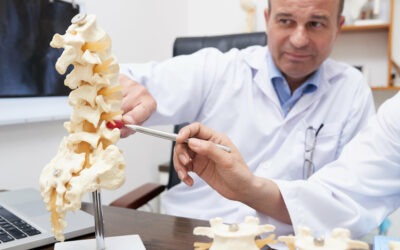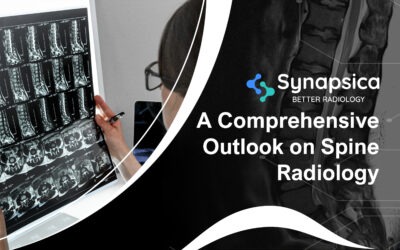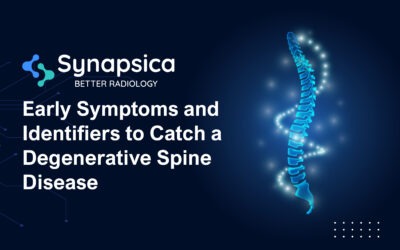
Back pain is the sixth most common condition in the U.S. and is one of the biggest health problems that almost every individual is likely to experience at some point in their life.
The spine is rightly recognized as the body’s central support system as any deformity in the spine caused as a result of aging, bad postures, or injury not only affects a person’s balance and movement but might also lead to nerve damage. Even worse, spine problems take a massive toll on mental health.
While numerous technological innovations help in treating spine conditions effectively, diagnosing the root cause of back pain is still challenging as the pain can be the result of a combination of problems and not just a single problem.
Stats show that only 10% of people figure out the root cause of their back pain.
In addition, missed or overlooked spine injuries can affect the treatment plan and expected outcomes. For instance, the first line of investigation for spine injuries is a CT scan. In a study conducted by NCBI on missed cervical injuries in all hospitals with an emergency department in England, 19% of the respondents reported at least one missed cervical spinal injury.
When England, which is a part of a highly developed nation (UK) that has the second most efficient health system of the 19 economically developed countries, can miss a cervical spine injury, think about the nations that are underdeveloped and still developing.
AI in diagnosing spine diseases and pain symptoms
Medical imaging is at the heart of spinal disorder diagnosis, as in most cases of back pain, imaging tests are used to confirm suspicions after physical examinations. The increased availability of MRI and CT scans and the increased incidence of spine problems have magnificently increased the number of spine-related imaging over the past couple of decades.
AI or artificial intelligence, though in its inception, is proving to be greatly instrumental in reading scans, diagnosing diseases, discovering drugs, and assisting surgeons during operations.
In the case of the spine, AI along with its subsets machine learning (ML), deep learning, representation learning, convolution neural networks (CNN), deep neural network (DNN), computer vision, and many others has proven to augment diagnostic capabilities.
For example:
Degenerative disease
Disc degenerative disease is a highly prevalent syndrome, particularly in the elder generation. With the help of AI-aided interpretation, physicians can quickly categorize the severity of the disease and streamline patient care to avoid worsening of the condition.
For instance, Spindle, an AI assistant for MRI spine, quantifies and characterizes features of disc shape, automatically grades disc degeneration taking into consideration height reduction and desiccation, and detects signal intensity changes without human intervention.
Now, all that is left for the physician is to cross-check the AI-generated radiology report and create a treatment plan for the patient.
Spinal deformity
ML algorithms scored 92.76% accuracy against human-derived measures in predicting Cobb angles
Machine learning algorithms have enabled automated image analysis of spinal deformity. Experiments conducted to study the accuracy of ML algorithms in predicting scoliotic curve severity against radiologists showed that algorithms reached an accuracy of 72.7%. In a similar experiment to predict Cobb angles, ML algorithms scored 92.76% accuracy against human-derived measures.
With the help of these algorithms, clinicians can predict patient response to surgery and thereby optimize their surgical approach.
Spine trauma
Accurate and rapid interpretation of volumetric medical images is essential in the clinical management of patients with spinal cord injuries. Hence, automated image analysis has an increased application in streamlining patient care for those with spine trauma.
With the help of AI’s subset, CNN, fractures in the spinal cord can be examined quickly. According to a research conducted to study the efficiency of a CNN model in spotting thoracolumbar osteoporotic fractures on 1432 CT scans ( with 713 positive and 719 negative cases of osteoporotic compression fractures), the model was accurate by 89.2%.
Spindle, an AI assistant for MRI spine can detect compression fractures and provides mensuration of various spine elements with 99% accuracy.
Spine oncology
Besides trauma and disorders, AI can also be used in spinal oncology. Currently, numerous studies are carried out to understand the efficiency and accuracy of AI in detecting spinal metastases and metastatic lesions on CT and MRI scans. Though the studies are currently limited by the scarcity of imaging datasets, experts believe that in the future AI’s potential will extend beyond tumor detection.
Experts are also positive that the future will be a place where AI will automatically generate clinically meaningful parameters like Bilsky grade and estimate spinal instability from MRI scans.
AI is undoubtedly a revolutionary technology that is reshaping the healthcare industry at its core. While there are a bunch of hurdles that AI needs to cross before demonstrating human-level performance in diagnosing spine diseases, it certainly will improve rapidly, just like it did in the past decade.
Check out how our AI-based radiology solutions are enabling healthcare providers to improve patient care.





